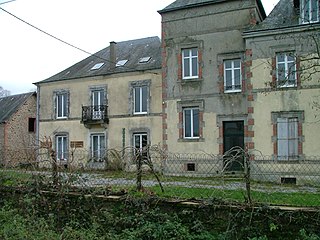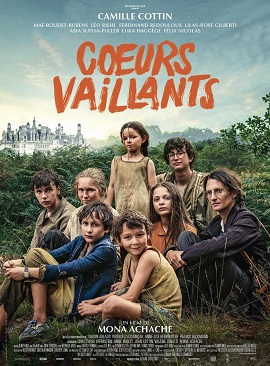Related Research Articles

The Kindertransport was an organised rescue effort of children from Nazi-controlled territory that took place in 1938–1939 during the nine months prior to the outbreak of the Second World War. The United Kingdom took in nearly 10,000 children, most of them Jewish, from Germany, Austria, Czechoslovakia, Poland, and the Free City of Danzig. The children were placed in British foster homes, hostels, schools, and farms. Often they were the only members of their families who survived the Holocaust. The programme was supported, publicised, and encouraged by the British government, which waived the visa immigration requirements that were not within the ability of the British Jewish community to fulfil. The British government placed no numerical limit on the programme; it was the start of the Second World War that brought it to an end, by which time about 10,000 kindertransport children had been brought to the country.
Holocaust survivors are people who survived the Holocaust, defined as the persecution and attempted annihilation of the Jews by Nazi Germany and its allies before and during World War II in Europe and North Africa. There is no universally accepted definition of the term, and it has been applied variously to Jews who survived the war in German-occupied Europe or other Axis territories, as well as to those who fled to Allied and neutral countries before or during the war. In some cases, non-Jews who also experienced collective persecution under the Nazi regime are considered Holocaust survivors as well. The definition has evolved over time.
The One Thousand Children (OTC) is a designation, created in 2000, which is used to refer to the approximately 1,400 Jewish children who were rescued from Nazi Germany and other Nazi-occupied or threatened European countries, and who were taken directly to the United States during the period 1934–1945. The phrase "One Thousand Children" only refers to those children who came unaccompanied and left their parents behind back in Europe. In nearly all cases, their parents were not able to escape with their children, because they could not get the necessary visas among other reasons. Later, nearly all these parents were murdered by the Nazis.
Abraham Salomon Glück was a French physician and a member of the French Resistance.

Œuvre de secours aux enfants, abbreviated OSE is a French Jewish humanitarian organization which was founded in Russia in 1912 to help Russian Jewish children. Later it moved to France.

Château de Chabannes was an orphanage in the village of Chabannes in Vichy France where about 400 Jewish refugee children were saved from the Holocaust by efforts of its director, Félix Chevrier and other teachers. It was operated by Œuvre de secours aux enfants (OSE) from 1940 to 1943.

During the Holocaust, children were especially vulnerable to death under the Nazi regime. An estimated 1.5 million children, nearly all Jewish, were murdered during the Holocaust, either directly by or as a direct consequence of Nazi actions.
Eva Fogelman is an American psychologist, writer, filmmaker and a pioneer in the treatment of psychological effects of the Holocaust on survivors and their descendants. She is the author of the Pulitzer Prize nominated book Conscience and Courage: Rescuers of Jews During the Holocaust and co-editor of Children During the Nazi Reign: Psychological Perspectives on the Interview Process. She is the writer and co-producer of the award-winning documentary Breaking the Silence: the Generation After the Holocaust and co-author of Children in the Holocaust and Its Aftermath: Historical and Psychological Studies of the Kestenberg Archive (2019).

Bloeme Evers-Emden was a Dutch lecturer and child psychologist who extensively researched the phenomenon of "hidden children" during World War II and wrote four books on the subject in the 1990s. Her interest in the topic grew out of her own experiences during World War II, when she was forced to go into hiding from the Nazis and was subsequently arrested and deported to Auschwitz on the last transport leaving the Westerbork transit camp on 3 September 1944. Together with her on the train were Anne Frank and her family, whom she had known in Amsterdam. She was liberated on 8 May 1945.

The effects of genocide on youth include psychological and demographic effects that affect the transition into adulthood. These effects are also seen in future generations of youth.

Judith Ida Kestenberg was a child psychiatrist who worked with Holocaust survivors. She founded the International Study of Organized Persecution of Children (ISOPC) an organization that coordinated the psychologically informed interviews of over 1500 child survivors throughout much of the world. She was also the lead creator of the Kestenberg Movement Profile (KMP), used to create a psychological profile based exclusively on movement patterns.

Judith Hemmendinger is a German-born Israeli researcher and author specializing in child survivors of the Holocaust. During World War II, she was a social worker and refugee counselor for the Œuvre de secours aux enfants (OSE), a French Jewish children's aid organization based in Geneva, and from 1945 to 1947, she directed a home for child survivors of Buchenwald in France. She has authored books and papers on the Holocaust experiences and later lives of child survivors. She was awarded the French Legion of Honor in 2003.
Romek “Robbie” Waisman is a Polish-Canadian educator and active member of the Holocaust survivor community in Canada. In 1944, he was interned at the Buchenwald concentration camp and forged strong relationships with the other children imprisoned there. After the war, he briefly lived in France, where he studied and came to terms with his new life as a war orphan.

Odette Abadi was a French physician, and member of the Resistance during World War II (WWII). She was a co-founder of the Réseau Marcel which saved more than 500 Jewish children from death during The Holocaust. Although she was arrested and tortured by the Gestapo, she refused to divulge the locations of the hidden Jewish children and was sent to two concentration camps. After Bergen-Belsen concentration camp was liberated in 1945, Abadi continued her profession as a doctor, with a focus on tuberculosis.
Dora Werzberg Amelan was a French nurse and social worker. In 1942, she rescued Jewish children through Œuvre de secours aux enfants (OSE). She worked in the Camp de Rivesaltes and the Gurs internment camp, and took care of children who had survived the Nazi concentration camps. She died during the COVID-19 pandemic due to complications brought on by COVID-19.

Alfred Brauner was an Austrian-born French scholar, author and sociologist, who was a volunteer in the International Brigades during the Spanish Civil War and an Austrian Resistance member during Occupied France. He has devoted his life to educating refugee, displaced and maladjusted children, participating in the welcoming of Jewish child survivors of the Kristallnacht and of the Nazi concentration camps of Buchenwald and Auschwitz from 1939 to 1946. An early writer on infantile autism, he also pioneered the analysis of children's drawings in war, creating from 1937 the first collection of drawing-testimonials to offer a unique perspective of the major conflicts of the 20th century through the eyes of children.
Élise "Lili" Garel was a French Jewish resistance fighter who, with her husband Georges Garel saved many Jewish children during the Shoah.
Fanny Ben-Ami is a French writer and child of the Holocaust.

Château de Chaumont is a ruined château undergoing restoration. It is located in Chaumont, straddling the municipalities of Mainsat and La Serre-Bussière-Vieille, in the Creuse department in the Nouvelle-Aquitaine region in central France.

Valiant Hearts is a 2021 World War II drama film written and directed by Mona Achache from a screenplay she co-wrote with Christophe Offenstein, Jean Cottin, Anne Berest, and Valérie Zenatti, starring Camille Cottin. The film is a co-production between France and Belgium and it is based on the real-life story of Achache's grandmother, Suzanne Achache–Wiznitzer, who was a Jewish child placed in foster care during World War II to escape the Holocaust. The film made its world premiere at the War On Screen Film Festival on 1 October 2021. It was released theatrically in France by BAC Films on 11 May 2022.
References
- ↑ Friedman, Jonathan C. "The Jewish Communities of Europe on the Eve of World War II" in The Routledge History of the Holocaust. London: Routledge 2011, 8
- ↑ USHMM Holocaust Encyclopedia article "Hidden Children: Quest for Family".
- ↑ http://www.yadvashem.org/yv/en/education/newsletter/24/hidden_children.asp%5B%5D
- ↑ A data base of important facts of 4080 individual Hidden Children who hid in France with the very critical help of Œuvre de secours aux enfants(OSE) has been created. "Hidden Children in France".
- ↑ The previous reference also gives much information about this French organization Œuvre de secours aux enfants (OSE) which was critically helpful to so many Hidden Children. It includes a listing of OSE "chateau" (mansions). "Hidden Children in France".
- ↑ The USHMM Exhibition gave important awareness to this special group - "the Hidden Children:" "Life in Shadows: Hidden Children and the Holocaust" "Life in Shadows: Hidden Children and the Holocaust".
- ↑ http://www.mjhnyc.org/LISHC/index.htm Archived 2016-03-04 at the Wayback Machine "
- ↑ The Anti-Defamation League (ADL) is a source for information about the hidden children – here the ADL describes, with photos, a few child survivors, not all of whom were hidden children https://www.adl.org/education/educator-resources/lesson-plans/children-of-the-holocaust-a-discussion-guide
- 1 2 3 Moskovitz, Sarah "LOVE DESPITE HATE – Child Survivors of the Holocaust and their Adult Lives." Schocken Books, New York 1983. ISBN 0-8052-3801-8.
- 1 2 3 Krell, Robert "Child Holocaust Survivors, Memories and Reflections." Trafford Publishing, 2007. ISBN 978-1-4251-3720-5.
- ↑ Fishman, J.S. "The War Orphan Controversy in the Netherlands: Majority-Minority Relations" in Dutch Jewish History, Jozeph Michman, ed. Jerusalem: The Institute for Research on Dutch Jewry 1984, 421-432
- ↑ Fox, Elaine Saphier (Ed). "Out of Chaos: Hidden Children Remember the Holocaust", Introduction by Phyllis Lassner (2013).
- ↑ "Claims Conference Reaches Landmark Agreement with Germany to Assist Child Survivors of the Holocaust". 2014-09-03.
- ↑ "Child Survivor Fund: Frequently Asked Questions". 5 September 2014.
- ↑ "Apply for Compensation". 3 February 2015.
- ↑ "Valiant Hearts". Menemsha Films. Retrieved 11 October 2023.
- ↑ "Marillenknödel, a recipe by Mamé, a film by Mona Achache". Grandmas Project. Archived from the original on 2 February 2023. Retrieved 6 December 2023.
- ↑ "Cinéma : "Cœurs vaillants", un film de Mona Achache, au cinéma le 11 mai". France Télévisions (in French). 5 May 2022.